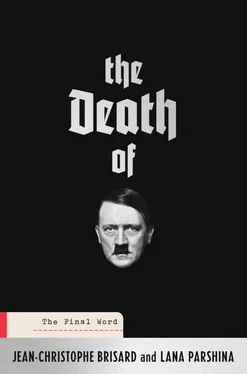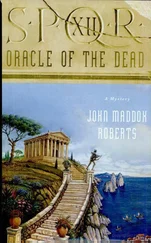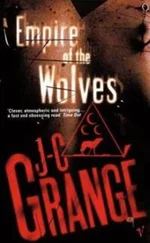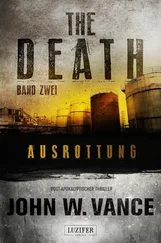Linge:The painting was by Menzel.
Investigator:So much for the site. [67] Ibid.
It’s hard to be more precise.
Unlike the written reports of the Soviets, for the first time Linge’s and Günsche’s statements are given here in oral form. The intonations of their voices, the tone and the phrasing, are additional information that helps us spot flaws in their answers.
Linge and Günsche seem very sure of their memories in these recordings. Neither of them has to search for words, neither is hesitant. And yet, for Linge, Hitler was facing the entrance on a sofa, beside Eva Braun. For Günsche, he was in front of the sofa, in an armchair.
This was a serious dilemma. Who were they to believe? Which version would they accept? Who was lying? Or who was mistaken?
Was Günsche telling the truth when he stated that Hitler hadn’t taken poison?
This episode is a perfect illustration of the near impossibility of trusting statements by witnesses to Hitler’s last moments. To get round this factual lacuna, there is, however, a solution: science.
* * *
Hence the presence of Philippe Charlier in the Laboratory of Solid State Physics in the Paris suburbs.
They have already spent over two hours going over the two fragments of tartar, micron by micron. Raphaël Weil works patiently and methodically. Nothing must escape him. In a few moments he will know everything about the chemical composition of these two pieces of evidence from the FSB archives. And perhaps he will find information about the composition of the prostheses. He is looking in particular for mercury, lead, arsenic, copper and, of course, iron. Because cyanide is impossible to reveal. Its traces disappear within twenty-four hours after its ingestion. And even faster if the corpse is burnt or kept at temperatures higher than 20º C. The clock shows 12:30pm. Raphaël Weil has gone on working for longer than planned. He has forgotten to be hungry. His concentration is at its peak, errors of interpretation are out of the question. Philippe Charlier is getting impatient. He awkwardly apologises to his fellow investigator. “Take your time,” he repeats to conceal his excitement, before asking again: “So… Is there any?” Calmly, after each calculation by the machine, the technician lists the chemical elements that have been revealed: calcium, potassium, phosphorus… but no iron, or so little that it is impossible to determine whether it comes from the fragments or the “chamber” of the microscope in which the pieces of tartar were arranged. Philippe Charlier will find out no more than that. His disappointment is total.
In fact it isn’t. Or not entirely.
Raphaël Weil turns towards the forensic scientist. Admittedly there is no information about the prostheses, but he has something better. He has absolute scientific proof of the authenticity of the tartar.
On the screen of the scanning electron microscope, a black-and-white image appears. It is blurred. It looks like a NASA command post from the time of the moon landings. Pebbly ground like that of a meteorite appears very gradually. The top of the screen comes into focus at last. “We’re getting there, you have to be patient,” Raphaël Weil says, without looking at me. Small bubbles form and fill the whole screen. Philippe Charlier recognises them immediately. “We have a classic view of dental tartar with these round shapes, like globules. This testifies to the phenomenon of calcification of dental plaque into dental tartar.” The engineer confirms: “All these globules are really the signature of the tartar.”
But the analysis doesn’t stop there. Very quickly, a vegetable fibre appears. Then another one. On the other hand, no meaty fibre is revealed. A simple piece of meat of even a micron would have been enough to call into question the attribution of these teeth to Hitler. At the moment of his suicide, the dictator had been a vegetarian for several years. The pathologist is reassured by the absence of any elements of meat.
Can he go even further with these two fragments of tartar? Can he tell if the Führer fired a bullet into his mouth? Antimony, atomic number 51, barium, atomic number 56, lead, atomic number 82. That is what Raphaël Weil is looking for. After quickly checking the periodic table, the engineer precisely calibrates his electronic microscope. Philippe Charlier has chosen to concentrate on those three minerals with a very precise goal in mind. If a gun was fired into Hitler’s mouth, traces of those three chemical elements would inevitably be found in his dental tartar.
The theory of Hitler’s suicide by firearm in the mouth was first presented by the British in November 1945.
Not even the best investigator would dare to inquire into the death of an individual without having access to the body, and without the opportunity to question eyewitnesses. But that was the situation of the Allied forces when they learned of Hitler’s suicide, in early May 1945. As we have already described the Anglo-American staffs could not agree on confirming the Soviet version. The one which claims that the Führer had very probably escaped. Then they tried the impossible. To bring together the greatest possible number of witness statements with their few Nazi prisoners who had been in the Führerbunker. The British delivered their report to the occupying forces in Germany (the Americans, the Russians, and the French) on 1 November 1945. With pragmatism and realism, the report begins with a confession in the form of resignation: “The only conclusive evidence that Hitler is dead would be in the discovery, and certain identification, of the body. In the absence of this evidence, the only positive evidence consists in the circumstantial accounts of certain witnesses who were either familiar with his intentions or eye-witnesses of his fate.” The British inquiry relied on a man who was close to Hitler. His name was Erich Kempka. He was thirty-five years old, and the dictator’s personal chauffeur. But he had only found out about the Führer’s death through Otto Günsche, Hitler’s aide-de-camp. Kempka gives an account of that scene with Günsche in his memoirs, published in 1951: “It was a dreadful shock. ‘How could that happen, Otto? I was speaking to him only yesterday! He was healthy and calm!’ Günsche was still so overcome that he could not speak. He merely raised his right arm, imitated holding a pistol grip with his fist and pointed to his mouth.” [68] Erich Kempka, I was Hitler’s Chauffeur , op. cit., p. 77.
Kempka presented this episode in the same way to British investigators in 1945. It was partly because of Kempka that the inquiry report by the British on 1 November 1945 states in black and white:
On 30 April at 2:30, Hitler and Eva Braun last appeared alive. They walked around the bunker and said goodbye to their direct entourage, the secretaries and the assistants, then withdrew to their apartments where they both committed suicide. Hitler by firing a bullet into his mouth and Eva Braun (although she had been given a revolver) by swallowing one of the capsules of poison distributed to everyone in the bunker.
Did the author of this report, the English historian Hugh Trevor-Roper, suspect that the Soviets hadn’t told the whole truth about Hitler’s death? During the official presentation of his inquiry to the officers of the occupying forces in Germany, Trevor-Roper attentively observed the attitude of the Russian representatives. A Red Army general was invited to react to the work of the British. Would the officer with the red star finally reveal something? Trevor-Roper would never forget his reply: “When invited to comment, [he] replied laconically and in a toneless voice: ‘Very interesting.’” [69] Hugh Trevor-Roper, The Last Days of Hitler , London, Pan Books, 1947, p. 6.
Читать дальше












